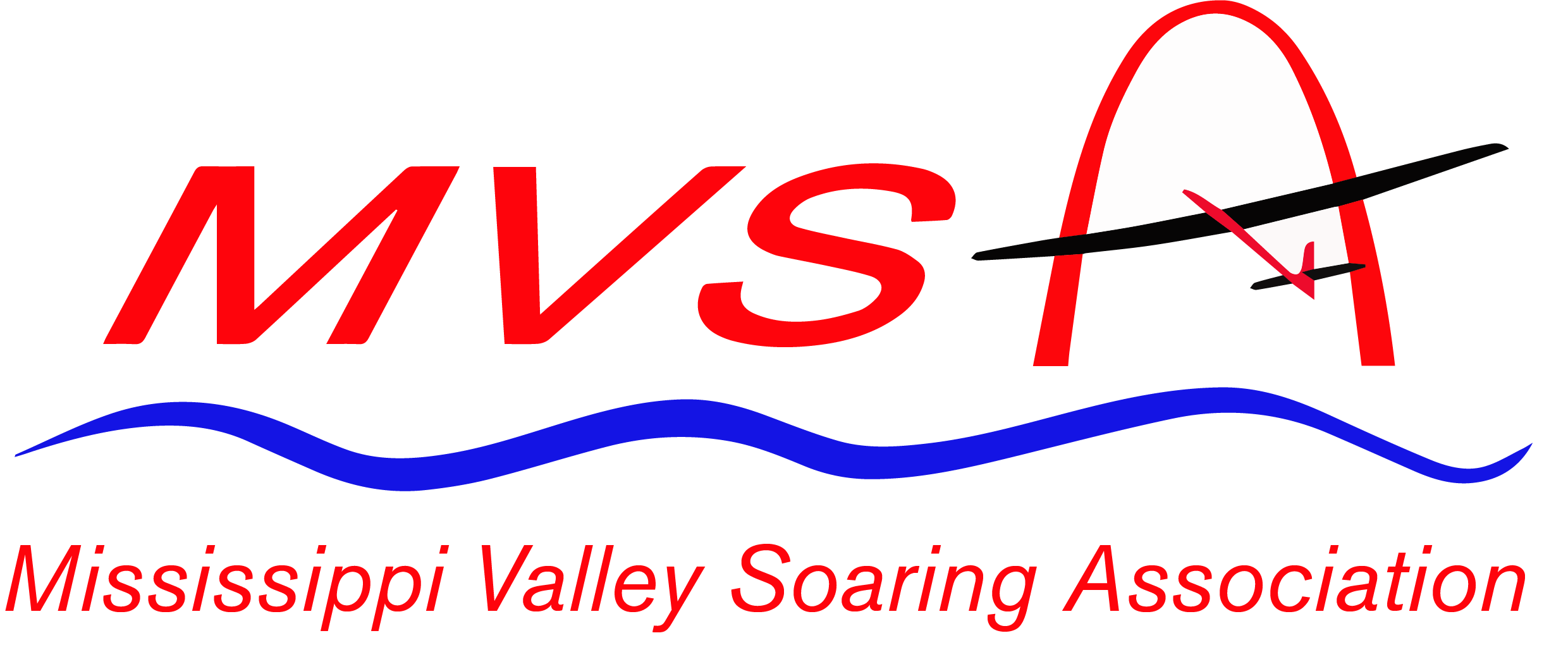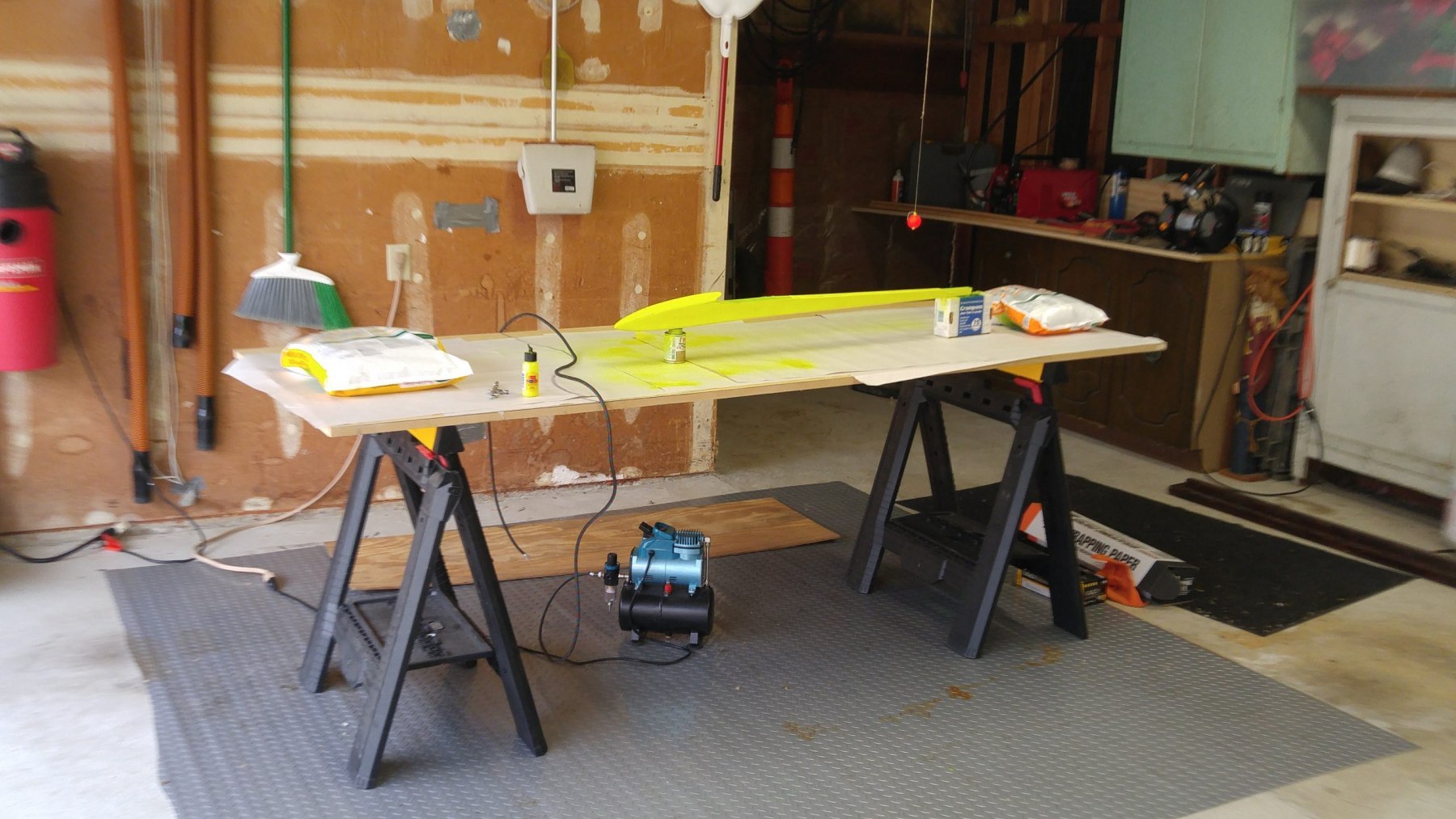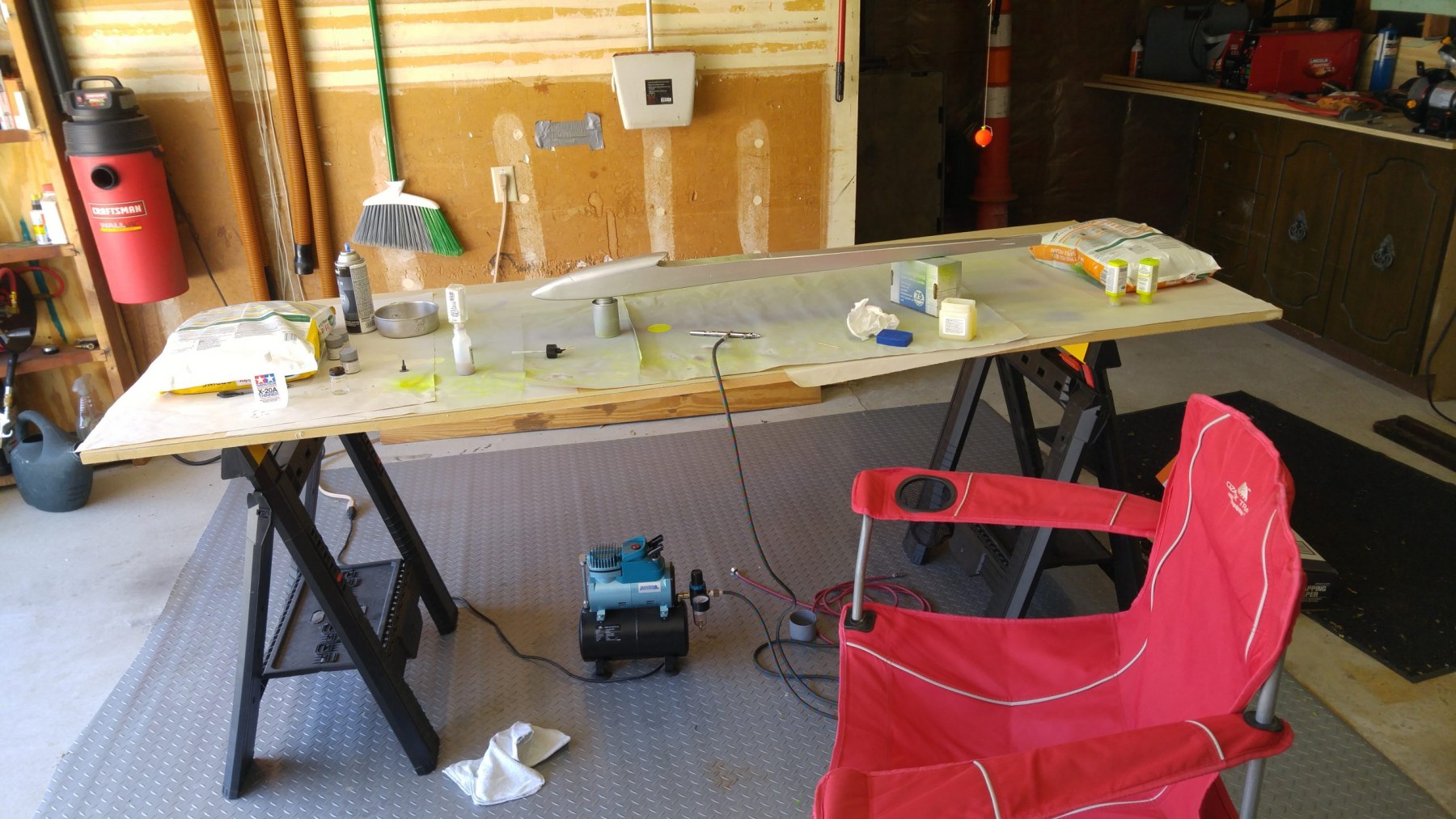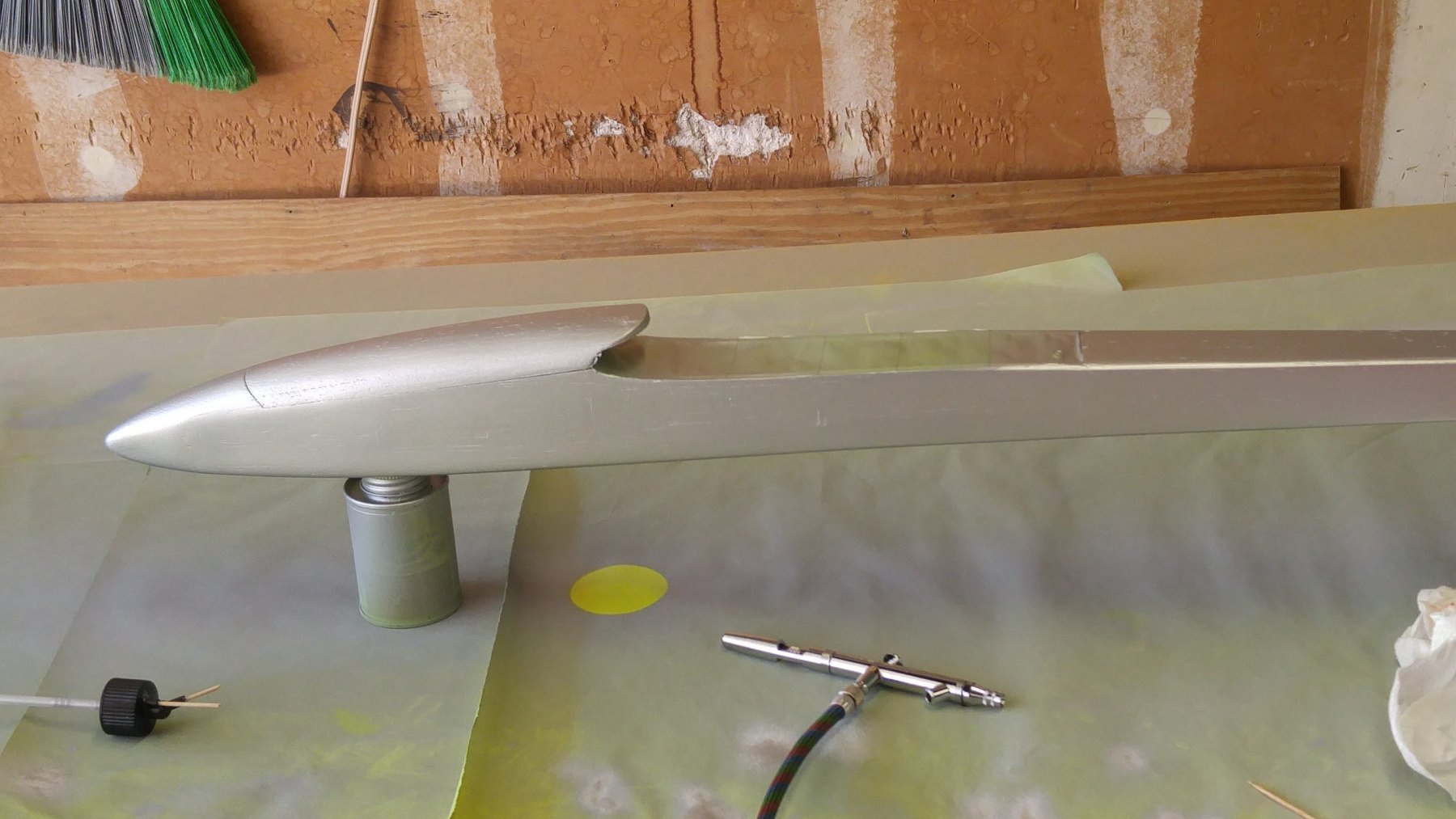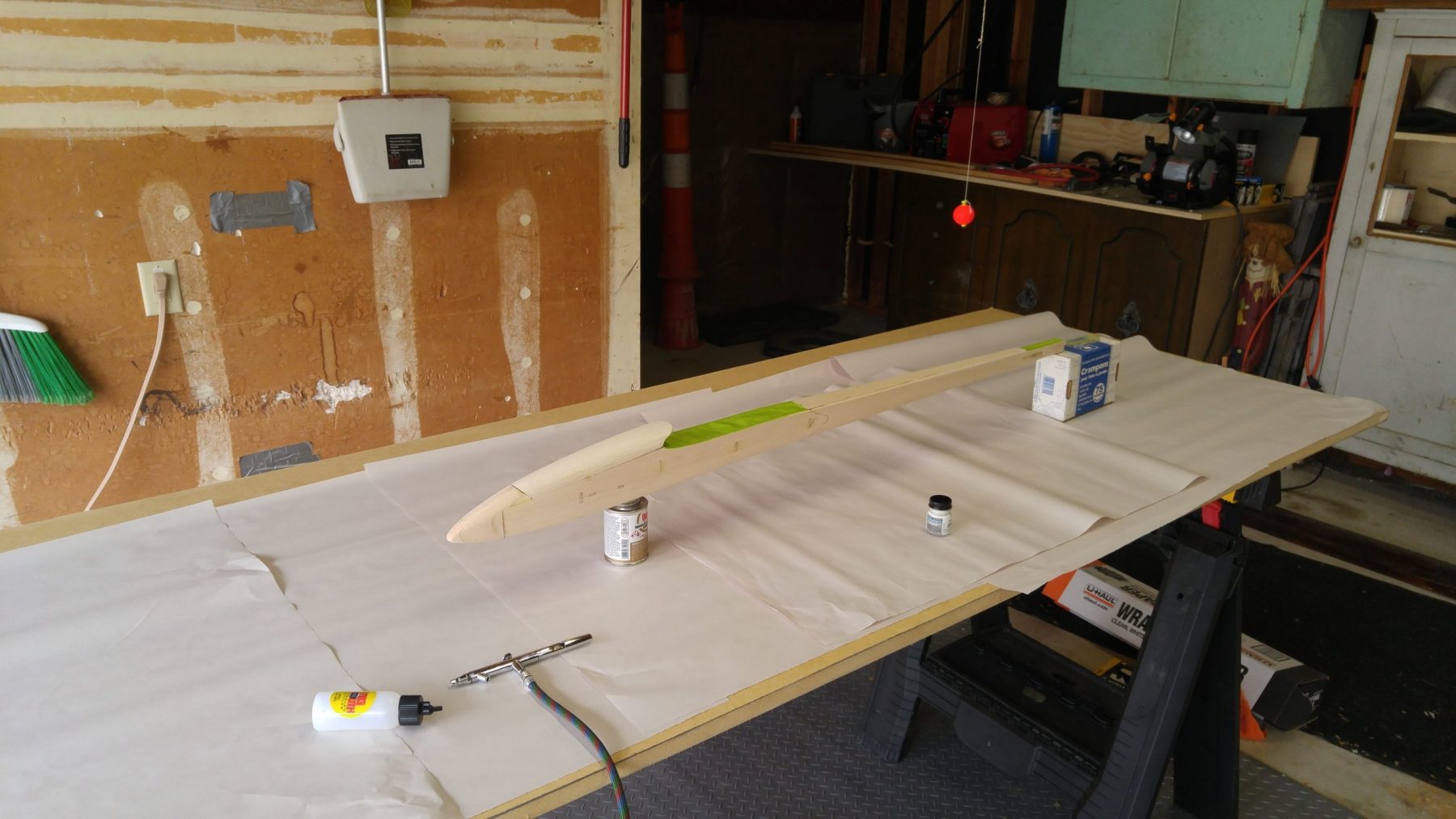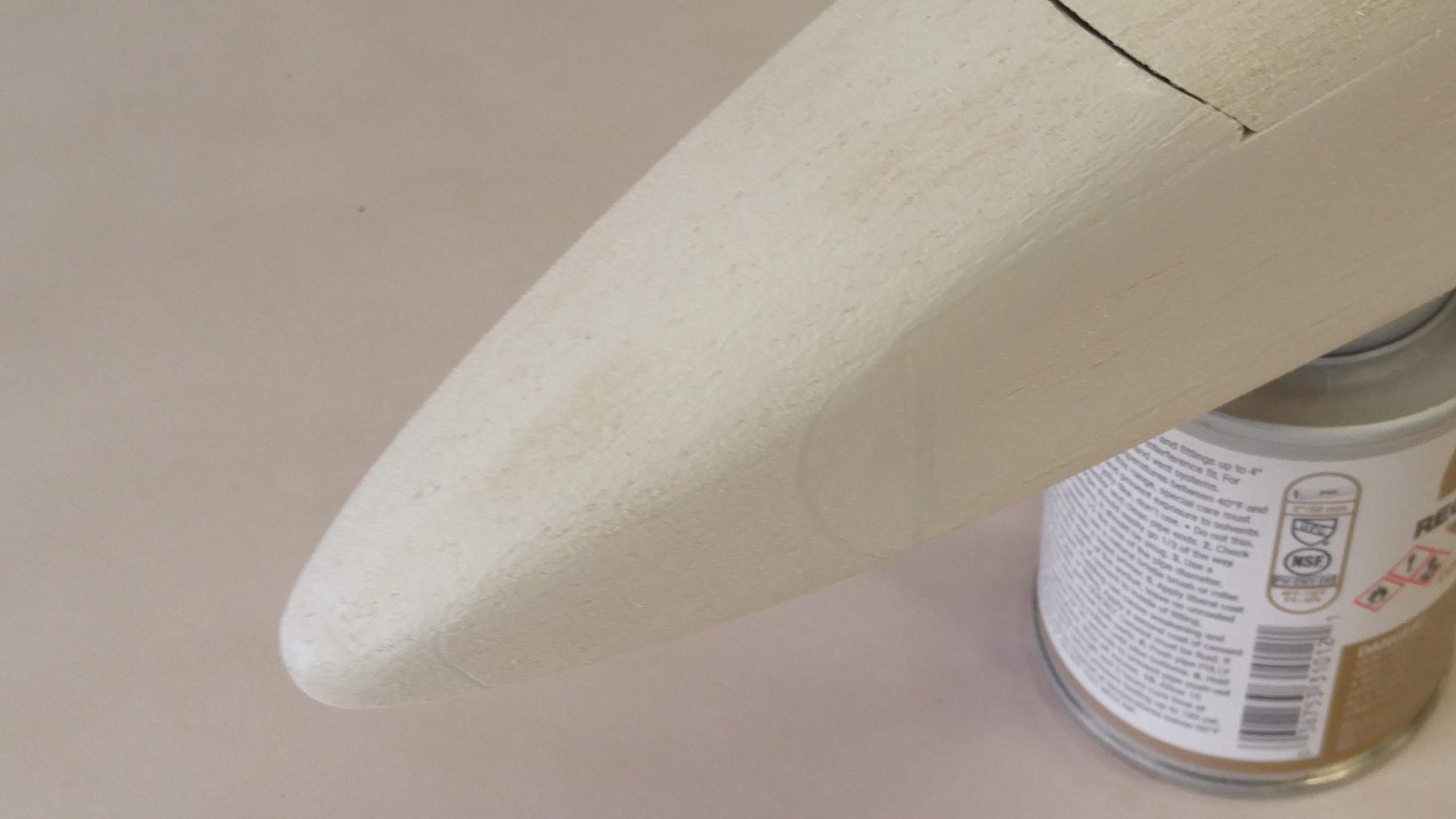
Hi, this article is a “What Not to Do”
This was my first attempt at airbrushing anything of value. What a steep learning, and there are so many variables I can’t begin to list all of them. I got myself a decent compressor and a suitable airbrush, check those two off the list. The variety of paints is mind-blowing. I can’t begin to help you with that stuff. I’m still going through the www.youtube videos learning that stuff. The various types of paints and the dry times and how they will or won’t play nice with each other are crazy.
Here’s some of what I did wrong: I didn’t seal the balsa; just figured the primer coat would seal the surface, Nope, and Nope again. The premier lifted the Balsa grain like a two-day-old beard. It forced me back to the sandpaper to clean up the beard. I figure more primer would help fill the sanded stubble. I am looking at the total weight going up, maybe not that much. So, I repeated this three times just to prove I didn’t know what I was doing. After the third primer coat, the balsa was clean-shaven but had lots of divots where the porous grain still hadn’t filled to the top. Time to move on to the next stage where I airbrush the silver undercoat with dreams of a sparkly and translucent finish coat. Back and forth with the airbrush making sure the fan pattern is just so, and the distance from the surface is maintained. Let it dry and see what you get. Wow, I’ve got a silver pocked marked fuselage. More paint ought to fix that, it’s not that much more weight. Repeated this silver paint two more times, having fun with the airbrush and forgotten the goal is a high flying machine. Oh well, if it doesn’t fly, I’ll use it as a paperweight—three coats of silver and on to the actual finish, Fluorescent Yellow.
Three more coats of Fluorescent Yellow, sanding between coats and I’ve still got a nasty looking pock problem. Finally, realize this is not working and I need to move to plan “B.” I hop in the car drive over to the local Ace Hardware and buy two cans of Krylon spray paint. I’m determined, I’m going to blow those pockmarks right off the face of my fuselage. After a can and a half of Krylon those pockmarks are history. I don’t even want to think about the overweight fuselage cause it is “purty.” Let it dry, or cure like concrete for a week, just to discover the paints are not playing friendly with each other.
Skipping to the end: I took this little Miss Piggy out to the field, hooked it up put the pedal to the metal. She comes screaming off the wire-like a beautiful red brick.
Point being seal the grain, save the weight, save the paint, save the plane.
